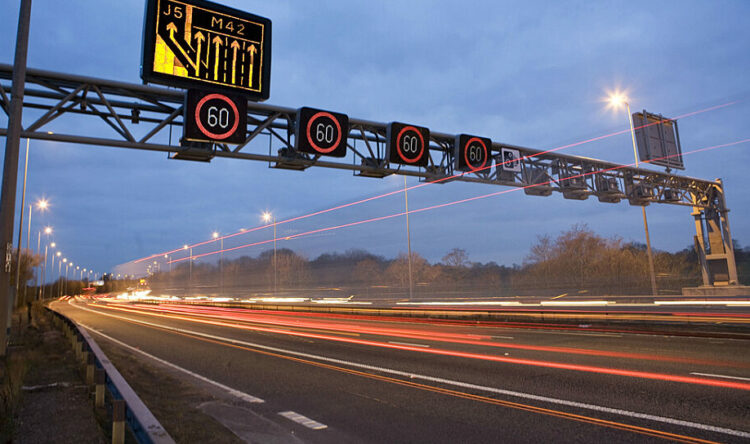Creating Safer Young Drivers
Young Driver Focus 19 brings together the facts and the figures
How do we create safer young drivers? It’s the perennial question, seemingly unsolvable, but this is exactly what Young Driver Focus 19 is working to do. It’s the raison d’etre of the event, the sixth highly successful annual conference of its kind set up by FirstCar with the support of ingenie, Road Safety GB and the RAC Foundation, amongst others.
Leading from the Front
Despite our enviable international position of now having the safest roads in the world when it comes to road deaths, effective improvements in reducing the carnage have effectively plateaued across Europe despite some amazing interventions locally, nationally and internationally. As ex UK Chief Constable and Executive Chairman of the event, Meredydd Hughes, put it in his introduction: “Difficulties on our roads are getting greater, and driving on our roads even more hazardous.” Traffic levels continue to increase exponentially and, while technology aims to help make our lives easier, more efficient and safer, it can also bring with it its own problems, from screen distractions behind the wheel, to the 24/7 lifestyle that leaves everyone desperate to catch up with expectations. Road safety and driver education is not only trying to conquer previous goals, but also new conundrums.
Young drivers remain a stubborn problem when it comes to road safety across the globe. With 500,000 new drivers hitting the roads every year in the UK alone, perhaps it’s not so surprising. Understanding the real causes is the only way to provide real solutions, and that is what Young Driver Focus is all about.
Swimming with the Tide
The keynote speaker flew in from across the pond – Dr Bruce Simons-Morton, Senior Investigator at the US National Institutes of Health. He presented evidence and research from the US looking at different interventions for novice drivers, and while there are “no magic solutions”, research and data do give us a good idea of schemes that have a positive effect in the highly dangerous 12-24 months after licensure. Graduated Driver Licensing (and there are many variants across the US), is mandatory in all states and most definitely works in all forms, though some better than others. Another notable success is ongoing mentoring and feedback based on ‘drivecams’ or telematics recordings of drivers’ behaviour. The other big influencing effect is from parents, both through their training support prior to passing the test, and more importantly, through their monitoring of a child’s driving behaviours post-test. Interestingly, there is plenty of evidence that young driver are far more easily and deeply distracted when behind the wheel.
Disappointingly, basic professional driver training seems to have little lasting attitudinal influence after licensure beyond the basic mechanical skills required for driving. However, this is based on a rather poor and short driver training regime in the US.
His conclusion was the need for greater use of GDL and supervising technology in the immediate post-test driving period allowing for monitoring, mentoring and the build-up of extended experience in real world conditions.
Real Progress
Since the Hazard Perception Test arrived in the UK in 2002, it has won praise and numerous awards for its significant contribution to road safety. Unfortunately, technology and user expectations have moved on while the test hasn’t. Professor David Crundall of Nottingham Trent University is currently working on a possible update of the test using Virtual Reality (VR) headsets. Considering the current system’s limitations, from poor quality two-dimensional imaging to ‘over clicking’ when seeing developing hazards, VR is potentially more realistic, with 360-degree display and a highly immersive experience. It’s early days in what is a two-year project, but the first two pieces of initial research have produced highly positive results, not least in ascertaining that motion sickness is unlikely to be a big issue. Developing, training and testing greater hazard perception skills in drivers could prove to be as significant for new drivers as the original HP test was.
Ask the Parents
Another highly relevant presentation for the training and testing industry came from motoring celebrity and Patron of Young Driver, Quentin Willson. He put out a challenging and compelling call to get more parents engaged in good driver training. While they are an essential ingredient in the mix, there are far too many parents who lack the correct knowledge or skills to help learner and young drivers, and this needs to be addressed urgently. He’s proposing a certificate system where parents can get professional tuition “to ensure they add to the fantastic service delivered by ADIs”, incentivised by the insurance industry with lower young driver premiums.
Fast and Furious
Another speaker calling on our driver trainers to help was ingenie’s Lead Data Scientist, Simon Jones. Using the insurance company’s unique data, he highlighted the very real danger of country roads and the fact that many new drivers fail to understand the potential dangers and the need to adjust their speed accordingly: “They are responsible for 80% of all young driver fatalities, even though they only carry 42% of car traffic”. Most crashes do not involve another vehicle. Conversely, young drivers are often scared of using motorways because they are busy and high speed, despite the fact that they are the safest part of the road network. Much of this comes from a lack of taught skills, experience and understanding. Simon called for greater cooperation across the board in order to change this, and provide young drivers with the skills and confidence to use all road types responsibly and safely.
An Award-Winning Day
There were so many great, thought provoking presentations throughout the day covering everything from seat belts to cycling, face communication to social media.
There were also the unique and highly respected ‘FirstCar Young Driver Safety Awards’, which this year included a Lifetime Achievement Award for recently retired DVSA Chief Examiner, Lesley Young.
All those shortlisted, along with the award’s winners, all the speaker presentations and photos from the day are available at: youngdriverfocus.org.uk






